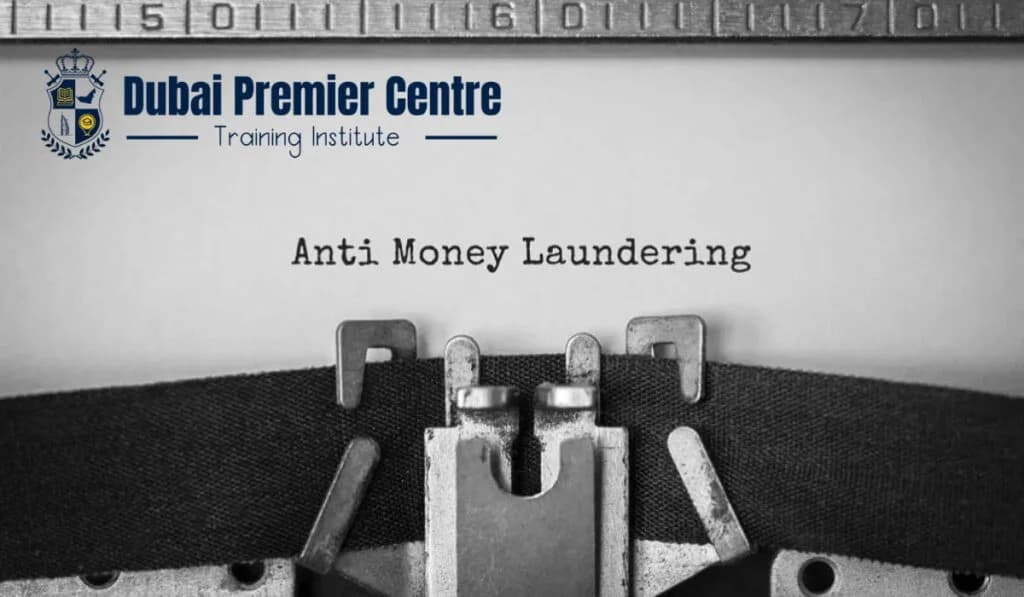AML and CTF: Protecting economies and global financial integrity

Economies and worldwide financial operations need strong anti-money laundering and countering the financing of terrorism legislation to function with integrity. The financial stability and sector health of a nation could be endangered by money laundering alongside terrorist financing and proliferation financing activities. They may cause banking crises, revenue inefficiencies, governance flaws, reputational risks for financial hubs, loss of CBRs, and destabilizing "hot money."
The harm caused by these crimes is worldwide, impacting the integrity and stability of the global financial system in a world that is growing more interconnected by the day. The integrity and stability of financial markets, as well as the global financial system, depend on AML/CFT laws and procedures, which are intended to prevent and combat these crimes. To combat financial crimes effectively, Dubai Premier Center Training Institute offers a specialized Course in Anti-Money Laundering and a Financial Crime Workshop
What is AML?
The financial sector hides illegal funds when money launderers input criminal proceeds into financial operations. The implementation of anti-money laundering measures produces two major benefits because they reduce other forms of criminality. Finding money that has been laundered allows it to be linked to other sources or individuals engaging in unlawful activity. The money can then be returned to its source, which was frequently not an illegal transaction.
In order to cover the greatest number of predicate offenses, the money laundering offense ought to be applied to all significant offenses. It should, at the very least, cover the 21 types of infractions listed in the Financial Action Task Force's (FATF) vocabulary, which include, among other things, tax crimes, fraud, drug trafficking, organized crime involvement, and corruption and bribery.
Stages of AML
The three main steps of money laundering that AML attempts to identify and stop are reflected in the stages of AML. These phases are
1. Placement
Criminal funds are first incorporated into the financial system at this point. Criminals attempt to transfer huge sums of money into reputable companies or financial institutions. Typical strategies include opening overseas bank accounts, employing cash-intensive enterprises, fabricating invoices, and depositing money into banks. Large currency transfers might raise suspicions and activate AML regulations, making this step dangerous for thieves.
2. Layering
The objective of dividing large illegal funds into smaller amounts of money is to conceal their criminal origin. Complex financial implementation through offshore corporations and trading in foreign currencies form part of the scheme with bank account transfers and luxury asset acquisitions. The crime's origin remains difficult for law enforcement to prove because funds get spread through complex banking transactions.
3. Integration
The last step is to reintegrate the money that has been laundered into the legal economy so that it appears to have been obtained properly. This can be accomplished by employing fictitious payrolls, loans, or dividends from criminally controlled shell corporations or by buying luxury goods, real estate, or other assets that can then be sold. The money now looks clean and is available for use without raising any red flags.
What is CTF?
Laws and regulations known as Counter-Terrorism Financing (CTF) are designed to prevent the unlawful funding of terrorism and terrorist-related activities. This covers the unlawful financing of terrorist groups themselves. Similar to money laundering strategies, those who fund these groups and endeavors usually attempt to conceal transactions by sending tiny sums of money at a time.
The FATF provides guidelines for preventing and keeping an eye on AML and terrorism funding. Large amounts of illegally obtained funds should be broken down into smaller parts for the purpose of hiding their ties to criminal activities. Financial science through foreign business entities and currency trading implements the scheme together with bank transfers and luxury asset purchases. The crime's origins prove hard to establish by law enforcement due to intricate banking operations that distribute funds.
Stages of CTF
Stopping and detecting the flow of money that supports terrorist activities, plus its ultimate suppression, is what the Counter-Terrorism Financing (CTF) phases primarily aim to achieve. The fight against funding terrorism stabilizes on specific sections yet proceeds apart from money laundering by sustaining funds that stem either from legal or unlawful activities.
1. Collection of funds
The initial process of funding terrorism requires funds from legal sources like charities and enterprise donations and illegal sources like fraud and drug trafficking and smuggling activities. The gathered funds are used by terrorists for the purpose of funding both the training and execution of attacks as well as preparation stages.
2. Transfer of funds
Funds are moved or transferred through a variety of channels once they are gathered to evade detection. Formal banking systems, cash couriers, digital currencies, and unofficial value transfer methods like hawala are examples of this. The intention is to avoid regulatory attention by hiding the fund’s source and destination.
3. Application of funds
The last phase is when the fund is being used to support terrorist activities, such as buying weapons, paying for travel and lodging, or assisting terrorist organizations and propaganda. Because it directly facilitates terrorist activity, this stage is crucial.
Difference between AML and CTF
Two separate but related systems designed to address financial crimes are AML (Anti-Money Laundering) and CTF (Counter-Terrorism Financing). A thorough comparison in every way may be seen below:
1. Objectives
- The main objective of AML is to block individuals who try to make illegal money seem legitimate. The program works toward stopping financial wrongdoing and blocking the transfer of illegally extracted money through criminal activities, including the drug trade, while blocking the absorption of criminal funds back into the economy
- The CTF operates to interrupt the financial support that terrorist operations require. The fundamental mission of the CTF involves detecting the movement of funds that support terrorism, regardless of their source integrity
2. Source of funds
- AML always includes money obtained by illegal means, such as drug trafficking, fraud, or theft. The intention was to hide the connection between the money and its criminal source
- In a CTF, funds may originate from both legitimate (donations, charitable organizations) and illicit (smuggling, extortion) sources. Where the money goes, not where it comes from, is the main focus
3. Nature of process
- AML is a cycle that includes gathering illegal monies, laundering them via layering strategies, and then reselling them as "clean" money
- CTF is a sequential procedure in which money is gathered, kept, moved, and eventually utilized for terrorist activities such as recruiting, training, or assaults
4. Risk assessment
International guidelines, such as those established by the Financial Action Task Force (FATF), regulate both AML and CTF. But:
- AML consists of sanctions screening for illicit revenues, transaction monitoring, reporting suspicious activity, and customer due diligence (CDD).
- The CTF contains asset freezes, tracks suspicious transactions connected to terrorism financing, and targets financial sanctions against identified terrorists or organizations.
Despite their differences, both take advantage of flaws in financial systems that permit non-transparency and anonymity. Strong regulatory measures are necessary for both to safeguard market integrity. AML and CTF are both procedures that frequently use strategies like layering transactions to avoid detection.
Why are AML and CTF laws important?
The financial system of a country suffers damage from money laundering alongside terrorist financing because these practices remove essential funds from beneficial purposes while causing financial instability. The financial system of any nation becomes unstable when its Countering the Financing of Terrorism (CFT) and Anti-Money Laundering (AML) regulations remain insufficient. Since it deters criminals from targeting that financial system, it is crucial that a nation be perceived as having a strong AML regulatory framework with financial businesses successfully implementing AML systems and controls.
As a small but open economy with a developing financial sector, Ireland needs to remain active in blocking money laundering and terrorist financing practices that affect its financial transactions.
Final Words
International financial protection demands different but supporting frameworks for counter-terrorism financing (CTF) and anti-money laundering (AML). AML prevents illegal money from polluting legal economic activity by focusing its efforts on discovering hidden criminal funds. To safeguard both domestic and global security, the CTF, on the other hand, concentrates on locating and stopping the flow of money that supports terrorist activities, whether it is earned legitimately or unlawfully.
Read Related Articles





